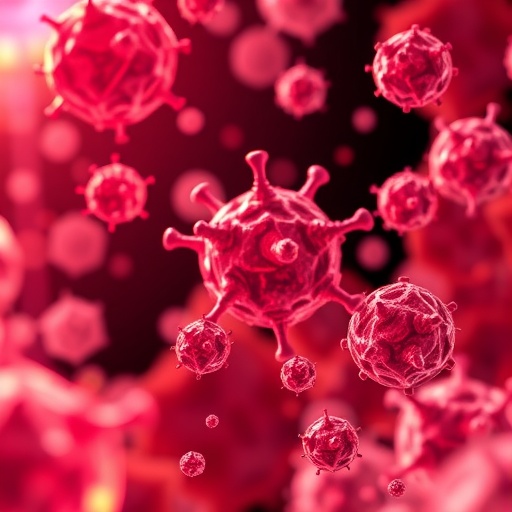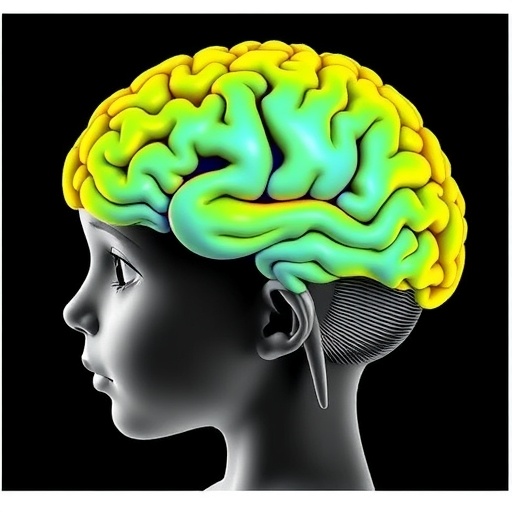In the rapidly evolving realm of cellular biology and evolutionary dynamics, predicting the emergence and proliferation of mutant cells within a growing population remains a formidable challenge. A breakthrough study recently published in PNAS Nexus introduces a sophisticated mathematical framework that elucidates how mutant burdens scale in spatially constrained populations. This research carries profound implications not only for evolutionary biology but also for critical biomedical applications, including understanding cancer progression and antibiotic resistance.
Populations of cells, whether in bacterial colonies or tumor masses, rarely exist in free-floating, well-mixed environments. Instead, they often grow constrained by spatial factors—expanding as two-dimensional biofilms or three-dimensional tissue masses. The spatial structure dramatically influences genetic diversity and mutation dynamics. Researchers led by Dominik Wodarz at the University of California San Diego have developed a scaling law that connects the population size to the expected number of mutants in such spatially structured, growing populations, offering a predictive tool for assessing mutational burdens under selective pressures.
Traditionally, modeling the emergence of mutations in growing populations has been computationally prohibitive due to the sheer number of possible evolutionary trajectories. Every mutation can give rise to multiple new mutants, resulting in an exponential explosion of potential futures. Wodarz and colleagues tackled this complexity by moving beyond simulation and formulating general laws that capture the relationship between mutants and total population size while accounting for critical variables such as spatial dimensionality and intermediate fitness effects.
At the core of their framework is the concept of dimensionality—whether cells expand on a flat, two-dimensional plane, like a bacterial biofilm, or within a three-dimensional volume, akin to a tumor. The dimensionality directly influences how mutations propagate spatially and how competition unfolds among different cell types. Consequently, the scaling laws adapt by adjusting power exponents that characterize the growth and mutation spread dynamics, offering accurate predictions for 2D and 3D systems alike.
An innovative aspect of this methodology is its inclusion of intermediate mutants, which harbor one or more mutations that confer partial fitness advantages or disadvantages. Rather than restricting the analysis to a binary classification of wild-type versus fully mutated cells, the model incorporates clones with varying mutations such as gene amplifications—where segments of DNA are duplicated—adding layers of realism that mirror biological complexities encountered in actual tissues.
Moreover, the study comprehensively addresses mismatch repair deficiency cells, a particularly vital element in oncogenesis. These cells carry defects in their DNA repair machinery, leading to higher mutation rates. Factoring these hypermutable populations into the scaling framework permits a nuanced understanding of mutation accumulation rates in tumors exhibiting genomic instability—a hallmark of many aggressive cancers.
A pivotal variable influencing the mutant burden is the total colony size or, equivalently, the duration for which the population has undergone expansion. Mutants accumulate over time, but their frequency relates nonlinearly to the colony size, governed by powers that reflect system-specific parameters. For example, the number of mutations might increase sublinearly or superlinearly depending on mutation fitness and spatial constraints, unveiling intricate dynamics that have evaded simplistic models.
The practical implications of this mathematical breakthrough extend deeply into clinical realms. Cancer cells or bacterial pathogens subjected to therapeutic drugs face intense selective pressure. Early identification of conditions under which therapy-resistant mutants arise could revolutionize treatment strategies, allowing clinicians to anticipate resistance development and adapt interventions preemptively.
Evolutionary biology also benefits from these insights, as the scaling laws enrich theoretical constructs around adaptive landscapes and mutation-selection balance. Cells in spatially structured populations exhibit evolutionary trajectories shaped not only by fitness landscapes but also by physical constraints and neighborhood effects, which this study elegantly quantifies.
Complementing the theoretical contributions, the authors provide simulation results depicting a colony evolving with multiple mutation types visualized via color-coding: wild-type, single-hit, double-hit, and triple-hit mutants. These graphical representations vividly illustrate spatial heterogeneity and mutation spread over time, aligning with the mathematical predictions and underscoring the robustness of the scaling laws.
This pioneering work paves the way for future research focused on integrating environmental factors such as nutrient diffusion, immune surveillance, and therapeutic gradients into the model, promising even more accurate forecasts of mutant population dynamics. It also invites experimental validation across diverse biological systems, bridging the gap between theory and practical application.
In summary, this efficient mathematical methodology delivers a powerful lens through which scientists and clinicians can better grasp the complexities of mutation accumulation in spatially expanding cell populations. By capturing the nuanced interplay of spatiality, fitness variation, and mutation sequences, it offers a potent predictive framework with far-reaching significance for treating diseases where cellular evolution plays a critical role.
Subject of Research: Mathematical modeling of mutation burden in spatially structured growing cell populations.
Article Title: Efficient mathematical methodology to determine multistep mutant burden in spatially growing cell populations.
News Publication Date: 23-Sep-2025.
Image Credits: Komarova et al.
Keywords: Evolution
Tags: antibiotic resistance mechanismscell population evolutioncomputational challenges in mutation modelinggenetic diversity in tumorsimplications of evolutionary dynamicsmathematical models in evolutionary biologymutant cell proliferationpredicting cancer progressionscaling law in biologyselective pressures on cell populationsspatial constraints in cell growthspatial structure in biofilms






